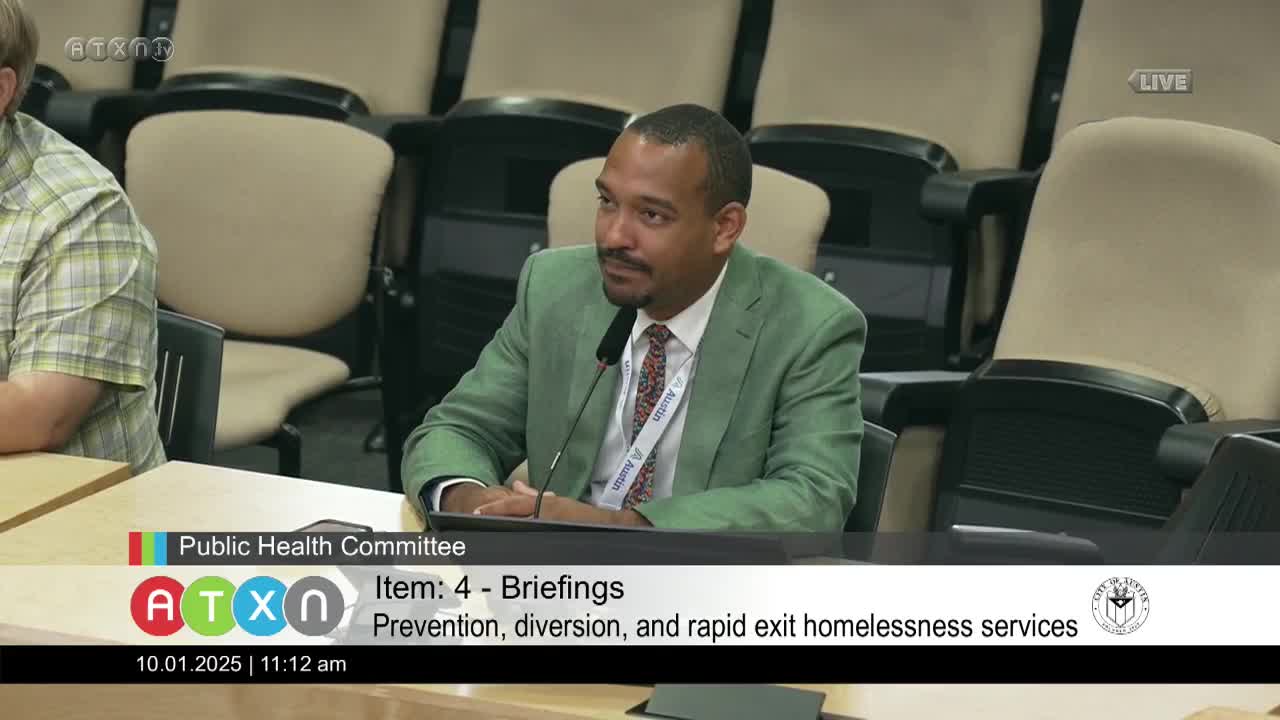Austin's WayFinder Program Innovates Homelessness Diversion Strategies for Families
October 01, 2025 | Austin, Travis County, Texas
This article was created by AI summarizing key points discussed. AI makes mistakes, so for full details and context, please refer to the video of the full meeting. Please report any errors so we can fix them. Report an error »

In a recent meeting of the Public Health Committee in Austin, Texas, discussions centered around innovative approaches to homelessness, particularly focusing on the concept of diversion programs. The committee highlighted the importance of the Housing Connector and other diversion initiatives, emphasizing the need for a centralized system to effectively address homelessness in the community.
One of the key points raised was the evolving definition of "diversion" in the context of homeless services. Various organizations, including LifeWorks and WE CAN NOW, have different interpretations of what diversion entails. This lack of uniformity can lead to confusion, as terms like "rapid exit" and "quick resolution" are increasingly being adopted to clarify the services provided. The committee acknowledged that while there is some overlap among organizations, each has its unique approach to diversion, which complicates collaboration.
The discussion also underscored Austin's position as a leader in innovative homeless services. The committee noted that the city has become a model for other communities, receiving inquiries from across the country about its strategies. This recognition reflects a broader trend in which local organizations are shifting their focus toward prevention and rapid exit strategies, driven by the need to adapt to limited resources and anticipated federal changes.
The meeting concluded with a consensus on the importance of continued collaboration among service providers to streamline efforts and improve outcomes for families facing homelessness. As the city moves forward, the emphasis on innovative solutions and clear communication among organizations will be crucial in addressing the complex challenges of homelessness in Austin.
One of the key points raised was the evolving definition of "diversion" in the context of homeless services. Various organizations, including LifeWorks and WE CAN NOW, have different interpretations of what diversion entails. This lack of uniformity can lead to confusion, as terms like "rapid exit" and "quick resolution" are increasingly being adopted to clarify the services provided. The committee acknowledged that while there is some overlap among organizations, each has its unique approach to diversion, which complicates collaboration.
The discussion also underscored Austin's position as a leader in innovative homeless services. The committee noted that the city has become a model for other communities, receiving inquiries from across the country about its strategies. This recognition reflects a broader trend in which local organizations are shifting their focus toward prevention and rapid exit strategies, driven by the need to adapt to limited resources and anticipated federal changes.
The meeting concluded with a consensus on the importance of continued collaboration among service providers to streamline efforts and improve outcomes for families facing homelessness. As the city moves forward, the emphasis on innovative solutions and clear communication among organizations will be crucial in addressing the complex challenges of homelessness in Austin.
View full meeting
This article is based on a recent meeting—watch the full video and explore the complete transcript for deeper insights into the discussion.
View full meeting
